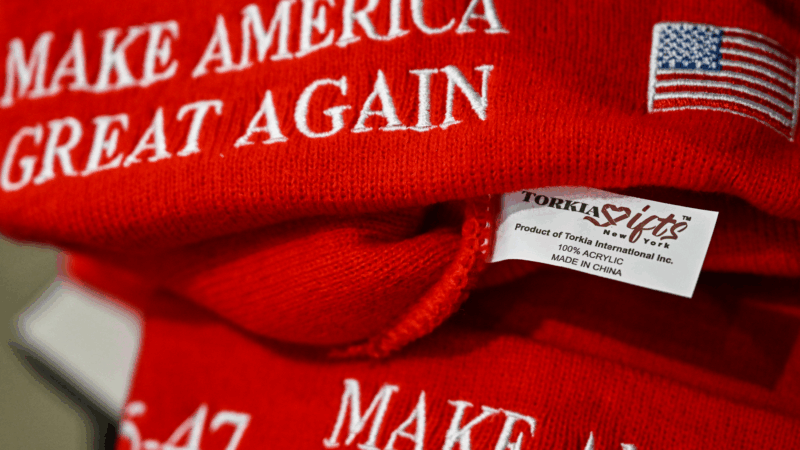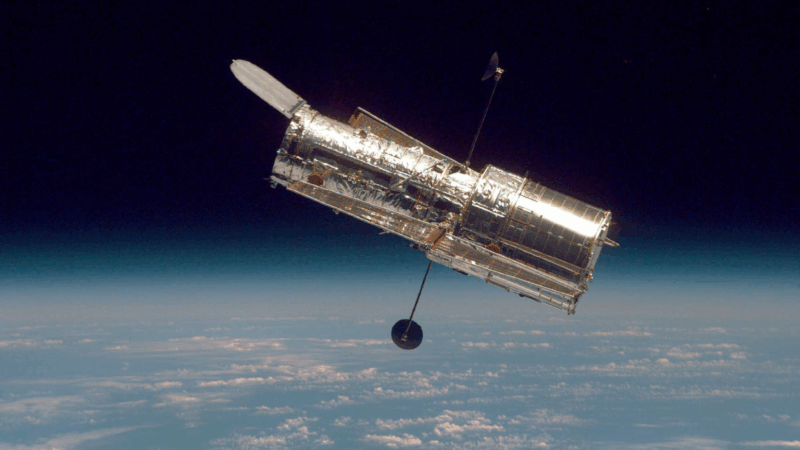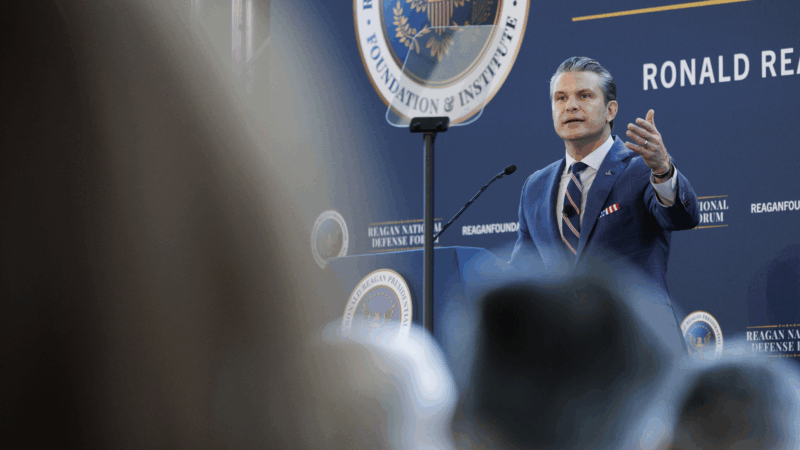What a Texas showerhead salesman discovered about ‘Made in the USA’ labels
Ramon van Meer sells showerheads made in China and Vietnam.
When President Trump imposed steep tariffs on Asian imports this spring, van Meer decided to find out if it made business sense for his company to shift production to the United States.
“I wanted to see how many people would actually pay for the more expensive, ‘Made in the USA’ version,” van Meer said.
So, he set up an online experiment. On his website, where customers can already choose from a variety of finishes — chrome, nickel or black — for their showerheads, van Meer offered two options: The imported showerhead for $129 and a domestic version costing about $100 more.
How he came up with the price
The higher price for the domestic option was based on what it would cost van Meer to stitch together a supply chain from scratch — one company to handle the plastic molding, another to do the metal plating and a third to supply the special filter that removes chlorine and heavy metals. No single company is making a product like that in the U.S. today, and if van Meer wanted to start, he figured he’d have to charge about 85% more than he currently does for the imported version.
What he found from his experiment could pour cold water on Trump’s effort to encourage more domestic manufacturing. The results were not even close. Of the more than 25,000 people who visited the website during the two-week trial, about 600 ordered the imported showerhead. Not a single person clicked on the more expensive, “Made in the USA” model.

“I was surprised, and not surprised,” van Meer said. “I was expecting the cheaper, Made-in-Asia [version] to quote-unquote ‘win.’ But I was not expecting that the results were this off balance. We sold zero ‘Made in the USA’ versions.”
Then there’s SaverShower, which is made in the USA
The offerings at a brick-and-mortar hardware store suggest similar buying patterns.
Nearly all of the showerheads on display at an Ace Hardware store outside Washington are made in China. The lone exception is a water-saving version made by Rick Whedon’s family business in West Hartford, Conn.
“My dad designed the original SaverShower in 1976,” Whedon said proudly. “We were shipping 2,000 showerheads a week out of here because everybody wanted to save energy.”
In addition to Ace Hardware, SaverShowers are popular at Menard’s, a big home improvement chain in the Midwest.
“Menards buys from us because we had a U.S.-made product and we were the only one they could find,” Whedon said. “The Ace buyer told me he doesn’t think consumers care at all where a product is made. And I kind of think he’s right.”
It takes eight local suppliers to make the parts for the all-brass showerhead, and they’re getting harder to come by.
“When we started this, there were 300 machine shops in Connecticut that turned brass to make parts,” Whedon said. “Today there might be 75.”
Whedon’s company makes most other models of their showerheads overseas, with the exception of that original, water-saving version.
He’s doubtful that Trump’s new tariff policy will spark a domestic renaissance in that kind of manufacturing.
“There’s nobody in the United States that’s going to start making showerheads here, even if the tariff were 250%,” Whedon said.

The California irrigation expert turned showerhead maker
Even companies that want to manufacture in the U.S. often struggle to compete.
“We charge a reasonable price for our showerheads,” said David Malcolm, a California irrigation expert who turned his water know-how to indoor plumbing about 15 years ago. “If you compare to ‘Made in China’ showerheads, ours are maybe twice the price.
Malcolm used to buy parts for his showerheads from a machine shop in nearby Merced, but that shop folded when most of its customers went overseas.
“At the time, everything was going to China,” Malcolm recalled. “And so little by little, the screw machine shops were disappearing.”
Today, Malcolm buys parts from a supplier in Taiwan. His website advertises showerheads “built at our factory in the California mountains from domestic and imported parts.”
“If the strategy behind tariffs is to bring industry like the screw machine shops back to the USA, it can’t be done on a moment’s notice,” Malcolm said. “It has to take time.”
So far, neither shoppers nor the president have shown the patience for that. Trump temporarily suspended his most punishing tariffs on imports from China after just over a month. And there’s no telling what comes next.
“The uncertainty is really bad for business owners,” said van Meer, the Texas showerhead marketer. “It’s going to be very hard to even plan ahead longer than three months.”
Van Meer said he hasn’t given up on manufacturing showerheads in the United States. But it’s not a high priority. He noted that imported products also help to employ American workers.
“Port employees are being paid. Trucking companies. Warehouse employees,” van Meer said. “The conversation lately was only about manufacturing jobs, but not about all of the other jobs that are alive because we can make it in other countries and sell it for a price that people are willing to pay.”
Transcript:
AYESHA RASCOE, HOST:
How much is a made-in-the-USA label worth to the typical shopper? A Texas showerhead salesman wanted to answer that question. And what he found could pour cold water on President Trump’s efforts to convince more companies to build their products in the U.S. NPR’s Scott Horsley has this report.
SCOTT HORSLEY, BYLINE: Ramon van Meer (ph) is a serial salesman. He’s hawked a variety of products over the years, including kitty litter that changes color when your cat might be sick and a ramp to help small dogs get up on the sofa. About a year ago, his Austin, Texas, company started selling a showerhead with a built-in filter to remove chlorine and heavy metals. So far, he says, business has been good.
RAMON VAN MEER: We sell around 25 to 35,000 showerheads a month.
HORSLEY: The showerheads are manufactured in China and Vietnam. So when President Trump imposed steep tariffs on Asian imports this spring, Van Meer decided to explore whether it made business sense to move production to the U.S. He knew it would cost more to build the product from scratch here, so he set up a little experiment. On his website, customers could already choose from a variety of finishes for their showerhead – chrome, nickel or black. Now, Van Meer added a second option – the Asian-made showerhead for $129 or a domestic model that cost about a hundred dollars more.
VAN MEER: I wanted to see how many people actually would pay for the more expensive made-in-the-USA version.
HORSLEY: The test ran for a couple of weeks and the results were not even close. Of the more than 25,000 people who visited the website and the 600 or so who bought showerheads, not a single one chose the more expensive American-made model.
VAN MEER: I was surprised and not surprised. I was expecting the cheaper made-in-Asia to, quote-unquote, “win,” but I was not expecting that the results were this off balance. We sold zero made-in-the-USA versions.
HORSLEY: Maybe that’s why at my neighborhood Ace Hardware store, I found more than a dozen showerheads on display, almost all of them made in China. The one exception was a low-flow model called the SaverShower. Rick Whedon’s (ph) family has been making them in West Hartford, Connecticut, for nearly half a century.
RICK WHEDON: My dad designed the original SaverShower in 1976. We were shipping 2,000 showerheads a week out of here ’cause everybody wanted to save energy.
HORSLEY: Whedon told me that, along with Ace Hardware, he sells a lot of showerheads through Menards, the big Midwestern chain.
WHEDON: Menards buys from us because we had a U.S.-made product, and we were the only ones they could find. The Ace buyer told me he doesn’t think consumers care at all where a product’s made, and I kind of think he’s right.
HORSLEY: In fact, Whedon’s company makes most other models of their showerheads overseas, with the exception of that original water-saving version. It takes eight local suppliers to make the parts for that showerhead, and Whedon says they’re getting harder to come by.
WHEDON: When we started this, there were 300 machine shops in Connecticut that turned brass to make parts. Today, there might be 75. There’s nobody in the United States that’s going to start making showerheads here, even if the tariff were 250%.
HORSLEY: I heard a similar story from David Malcolm (ph), who turned his irrigation expertise to making showerheads in California, about 15 years ago. The regional machine shop he used to buy parts from went out of business when most of their customers left the country. So Malcolm now sources parts from Taiwan.
DAVID MALCOLM: When I go to a hardware store, I – and I’ll buy something that has American flag on it, and I’ll look very closely at it, and it’ll say, made in the USA using global components.
HORSLEY: If you really want to bring this kind of manufacturing back to the U.S., you’d have to restore the whole ecosystem of parts suppliers and skilled workers, and neither shoppers nor the president have shown the patience for that. Trump temporarily suspended his most punishing tariffs on imports from China after just over a month. Van Meer, the Texas showerhead salesman, says there’s no telling what comes next.
VAN MEER: The uncertainty is really bad for business owners. What’s going to happen after 90 days? Is it going to be 200%? It’s going to be lower? We don’t know. So it’s just going to be very hard to even plan ahead longer than three months.
HORSLEY: Van Meer says he’s not giving up on making showerheads in the U.S., but it’s not a high priority. He’s got 30 American employees on his payroll and needs to keep selling imported showerheads to keep those paychecks coming.
Scott Horsley, NPR News, Washington.
(SOUNDBITE OF OMEGAH RED’S “BOOKS OF WAR (INSTRUMENTAL)”)
Light from satellites will ruin majority of some space telescope images, study says
Astronomers have long been concerned about reflections from satellites showing up in images taken by telescopes and other scientific instruments.
Defense Department is reviewing boat strike video for possible release, Hegseth says
In a speech on Saturday, Defense Secretary Pete Hegseth defended the strikes, saying: "President Trump can and will take decisive military action as he sees fit to defend our nation's interests."
Bama, Miami in, Notre Dame out and Indiana No. 1 in College Football Playoff rankings
Nobody paying attention for the past 24 months would be surprised to see Indiana – yes, Indiana – leading the way into this year's College Football Playoff.
McLaren’s Lando Norris wins first F1 title at season-ending Abu Dhabi Grand Prix
Red Bull driver and defending champion Max Verstappen won the race with Norris placing third, which allowed Norris to finish two points ahead of Verstappen in the season-long standings.
A ban on feeding pigeons ruffles lots of feathers in Mumbai
The pigeon population has exploded — a result of people feeding the birds. For some it's a holy duty and a way to connect to nature. Critics point to health risks tied to exposure to pigeon droppings.
UN humanitarian chief: world needs to ‘wake up’ and help stop violence in Sudan
The UN's top humanitarian and emergency relief official has told NPR that the lack of attention from world leaders to the war in Sudan is the "billion dollar question".








